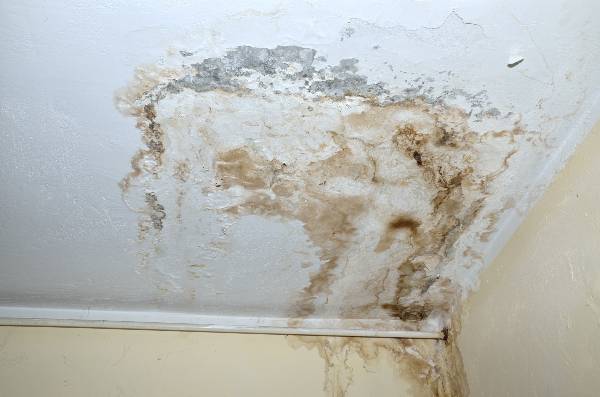Overview To Water Leak Detection In The House
Overview To Water Leak Detection In The House
Blog Article
Everyone seems to have their own theory in relation to Top leak detection hacks.

Early detection of dripping water lines can mitigate a prospective calamity. Apart from conserving you money, it will certainly minimize the stress as well as irritation. The minute you discover a leakage, calling your plumber for repair services is the very best service. Nevertheless, some tiny water leakages might not be visible. If you can not find it with your naked eyes, right here are some hacks that assist.
1. Analyze the Water Meter
Every house has a water meter. Inspecting it is a proven manner in which aids you find leaks. For beginners, turn off all the water sources. Make sure no person will certainly flush, make use of the faucet, shower, run the cleaning device or dishwasher. From there, most likely to the meter as well as watch if it will certainly alter. Since nobody is utilizing it, there ought to be no activities. That shows a fast-moving leakage if it moves. If you detect no modifications, wait a hr or 2 and also inspect back once again. This suggests you might have a slow leak that could even be underground.
2. Check Water Consumption
Assess your water bills and also track your water intake. As the one paying it, you need to observe if there are any type of discrepancies. If you spot sudden changes, regardless of your usage being the same, it indicates that you have leaks in your plumbing system. Remember, your water costs ought to drop under the very same variety monthly. An abrupt spike in your expense shows a fast-moving leak.
A steady increase every month, even with the very same behaviors, reveals you have a slow-moving leakage that's additionally gradually rising. Call a plumber to extensively examine your residential or commercial property, particularly if you feel a cozy location on your floor with piping underneath.
3. Do a Food Coloring Examination
When it comes to water intake, 30% comes from toilets. If the shade somehow infiltrates your dish throughout that time without flushing, there's a leakage between the storage tank and bowl.
4. Asses Outside Lines
Don't fail to remember to inspect your outside water lines as well. Test faucets by connecting a garden hose. Ought to water seep out of the link, you have a loosened rubber gasket. Change this and ensure all links are tight. If you've obtained a sprinkler system, it will certainly assist get it skillfully checked out and preserved each year. One tiny leakage can throw away tons of water and also increase your water bill.
5. Examine as well as Evaluate the Scenario
Homeowners ought to make it a habit to check under the sink counters and even inside cabinets for any type of bad odor or mold and mildew growth. These two red flags indicate a leakage so prompt attention is required. Doing routine assessments, even bi-annually, can save you from a major issue.
If you know your house is already old, keep a careful eye on your heating units, hoses, pipelines and so on. Check for stainings and compromising as the majority of devices as well as pipes have a life span. They will also normally degrade because of wear and tear. If you suspect dripping water lines in your plumbing system, do not wait on it to escalate. Call a specialist plumber immediately so you do not end up with a horrible mess in your house.
Early detection of dripping water lines can mitigate a prospective calamity. Some little water leakages might not be noticeable. Examining it is a guaranteed means that helps you uncover leaks. One small leak can lose tons of water and also spike your water expense.
If you presume dripping water lines in your plumbing system, do not wait for it to escalate.
WARNING SIGNS OF WATER LEAKAGE BEHIND THE WALL
PERSISTENT MUSTY ODORS
As water slowly drips from a leaky pipe inside the wall, flooring and sheetrock stay damp and develop an odor similar to wet cardboard. It generates a musty smell that can help you find hidden leaks.
MOLD IN UNUSUAL AREAS
Mold usually grows in wet areas like kitchens, baths and laundry rooms. If you spot the stuff on walls or baseboards in other rooms of the house, it’s a good indicator of undetected water leaks.
STAINS THAT GROW
When mold thrives around a leaky pipe, it sometimes takes hold on the inside surface of the affected wall. A growing stain on otherwise clean sheetrock is often your sign of a hidden plumbing problem.
PEELING OR BUBBLING WALLPAPER / PAINT
This clue is easy to miss in rooms that don’t get much use. When you see wallpaper separating along seams or paint bubbling or flaking off the wall, blame sheetrock that stays wet because of an undetected leak.
BUCKLED CEILINGS AND STAINED FLOORS
If ceilings or floors in bathrooms, kitchens or laundry areas develop structural problems, don’t rule out constant damp inside the walls. Wet sheetrock can affect adjacent framing, flooring and ceilings.
https://www.servicemasterbyzaba.com/blog/how-to-detect-water-leakage-in-walls/

As a serious reader on Detecting hidden plumbing leaks, I think sharing that editorial was worthwhile. Sharing is caring. Helping others is fun. Thanks so much for taking the time to read it.
Report this page